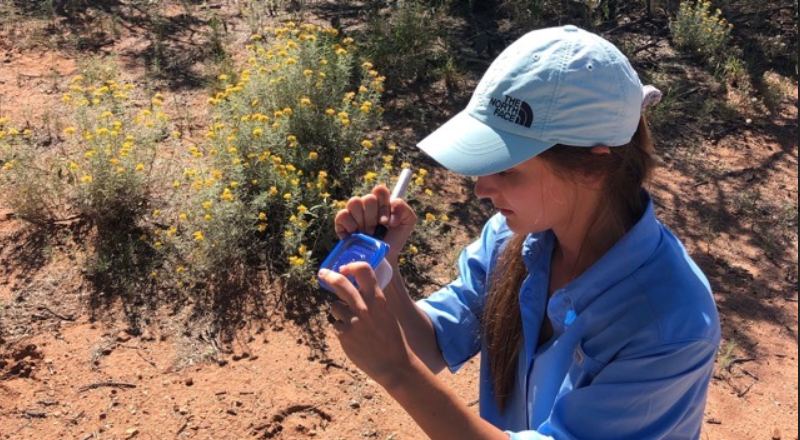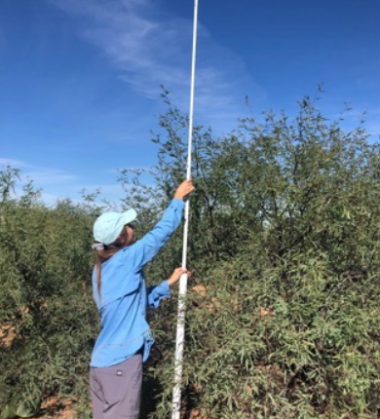Student Spotlight: New Opportunities at One of the Oldest Biological Research Stations, Ella Kaufmann (BS '22)
Environmental science major Ella Kaufman researches how we can best manage our desert's rangelands.
Research opens doors for growth and innovation, even at field stations over 100 years old. Ella Kaufman (BS Environmental Science '22) can attest to this with her internship at the Santa Rita Experimental Range just south of Tucson.
“I wanted a hands-on experience to see my studies come to life in a tangible way, and I made that dream a reality working with in the field with a research team.
Growing up on a farm in Michigan, Kaufman has always felt connected to agriculture and land management. After receiving a department email about an internship studying rangeland management, Kaufman immediately applied.
Check out Student internship opportunities
Managing rangelands in the desert
The internship was with the Archer Lab at the longest continually active rangeland research facility: the Santa Rita Experimental Range.
Covering 52,000 acres, the research at this field site is critical to understanding the ecology and management of desert rangelands, from rainfall to vegetation growth to cattle grazing. Rangelands are large open areas containing natural vegetation that provide grazing and forage for livestock and wildlife.
“Our studies are critical for rangeland management decisions and the plants, animals and people that depend on them for survival.”
Kaufman worked specifically on brush management and ecosystem services, meaning she investigates how removing woody and invasive plants can restore rangelands.
In rangelands surrounding Tucson, years of fire exclusion and livestock overgrazing have allowed invasive woody plants—like native velvet mesquite—to thrive, fundamentally altering the grassland ecosystem.
Long days in the field, lots of samples
Kaufman's project focuses on the long-term impacts of herbicide-based brush control of mesquite, looking at the plants and animals in treatment versus control sites. Out in the field, this meant identifying plant species, taking tree measurements, and collecting specimen samples.
One of Kaufman's favorite projects was studying ant community composition by mapping ant nests and using GPS receivers to mark the nest locations.
“I recommend to every student in environmental science to get involved in a research opportunity as soon as possible. Take time to investigate, explore and discover new things.”




